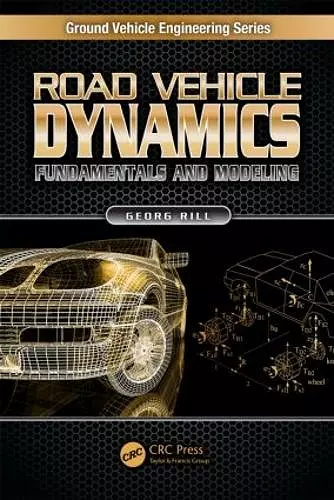Road Vehicle Dynamics
Fundamentals and Modeling
Format:Hardback
Publisher:Taylor & Francis Inc
Published:21st Sep '11
Currently unavailable, and unfortunately no date known when it will be back

In striving for optimal comfort and safety conditions in road vehicles, today’s electronically controlled components provide a range of new options. These are developed and tested using computer simulations in software in the loop or hardware in the loop environments—an advancement that requires the modern automotive engineer to be able to build basic simulation models, handle higher level models, and operate simulation tools effectively.
Combining the fundamentals of vehicle dynamics with the basics of computer simulated modeling, Road Vehicle Dynamics: Fundamentals and Modeling Aspects draws on lecture notes from undergraduate and graduate courses given by the author, as well as industry seminars and symposiums, to provide practical insight on the subject. Requiring only a first course in dynamics and programming language as a prerequisite, this highly accessible book offers end-of-chapter exercises to reinforce concepts as well as programming examples and results using MATLAB®.
The book uses SI-units throughout, and begins with an introduction and overview of units and quantities, terminology and definitions, multibody dynamics, and equations of motion. It then discusses the road, highlighting both deterministic and stochastic road models; tire handling including contact calculation, longitudinal and lateral forces, vertical axis torques, and measurement and modeling techniques; and drive train components and concepts such as transmission, clutch, and power source.
Later chapters discuss suspension systems, including a dynamic model of rack-and-pinion steering as well as double-wishbone suspension systems; force elements such as springs, anti-roll bars, and hydro-mounts; and vehicle dynamics in vertical, longitudinal, and lateral directions using a simple model approach to examine the effects of nonlinear, dynamic, and active force elements. Highlighting useable knowledge, the book concludes with a three-dimensional vehicle model and typical results of standard driving maneuvers.
"As expected in a text, the volume is filled with equations, MATLAB® listings, figures and tables. It goes from rather simple concepts, say linear analysis, to sophisticated treatments, like non-linear vibrations. I liked this book, meant for undergraduates… I would recommend it as the most useful reference."
—Noise Control Engineering Journal, January – February 2015
ISBN: 9781439838983
Dimensions: unknown
Weight: 635g
362 pages